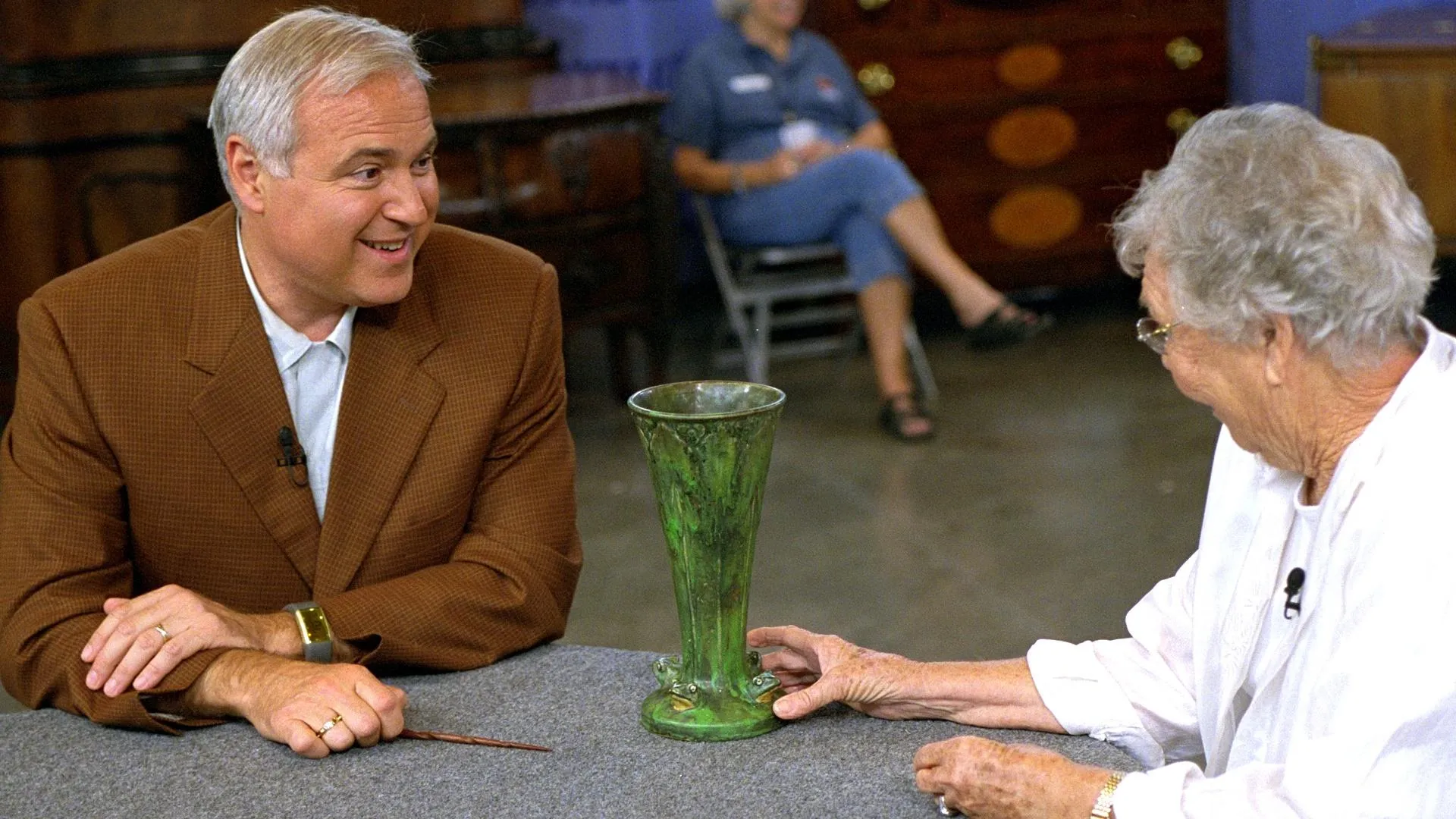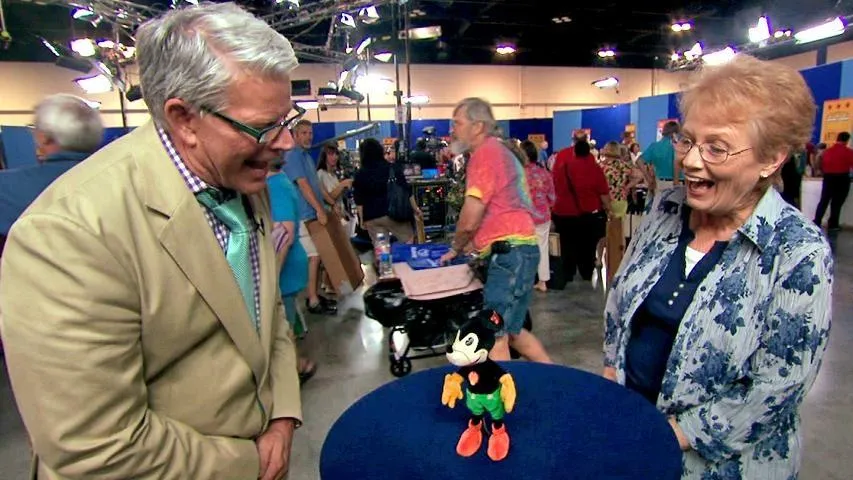GUEST: I've had this for about 32 years. I used to work for a gentleman that had commercial real estate. And one of my jobs was to make sure the crews would go in behind tenants and clean out whatever was left of the commercial real estate. And at the very back of this office was this canvas case that was moldy and mildewy and just nasty, kind of propped up and shoved up against the wall. I just literally tossed it over, away from the Dumpster pile, and then later went back and saw that it was this little guitar, and I thought, "Oh, nice, a kid's guitar." I brought it home and ended up throwing the case in the garbage because it was just too gross to even bring in the house, put a set of strings on it, and it sounded pretty nice. So I just kept it.
APPRAISER: I think this might be my first Dumpster-dive guitar.
GUEST: That's right.
APPRAISER: The guitar was made by C.F. Martin & Company in Nazareth, Pennsylvania. They've been making guitars since 1833. This guitar was made in 1899.
GUEST: How do you know that?
APPRAISER: There's a number on the inside. Martin started serializing guitars in 1898, and this is the second year of serialization. The model is a 1-21. Thinking it is a child guitar is normal because it seems small compared to the guitars that we have nowadays, but in 1898, this was considered a normal adult parlor-size guitar. It's about 12 1/2 inches across the face, whereas a full-sized guitar nowadays might be as big as 17 inches. There is a stain down here which I think would probably come off, and then a similar stain here. And these may have come from being in the wet case you were talking about. But it doesn't seem to have affected the finish very much. The main thing about the finish is it's all original. It's never been messed with. The back of the guitar is beautiful. It's Brazilian rosewood. Martin used this wood up until 1969. It's coveted by players. It's considered the finest wood out there for guitars. This guitar has survived very, very well. The parts and pieces of this guitar have stayed intact for over 100 years. That's pretty phenomenal when you think about it. And the quality of the guitar speaks for itself. So you've never had it appraised?
GUEST: No. I looked on the Internet to try to find information about it. I just couldn't... I couldn't see anything that was like it. All of them were huge. So I don't know.
APPRAISER: I think this guitar, in a retail environment, would sell between $4,000 and $5,000.
GUEST: (laughing) You're kidding!
APPRAISER: Not at all. Well, this guitar is very happy that you saved it.
GUEST: Wow.












